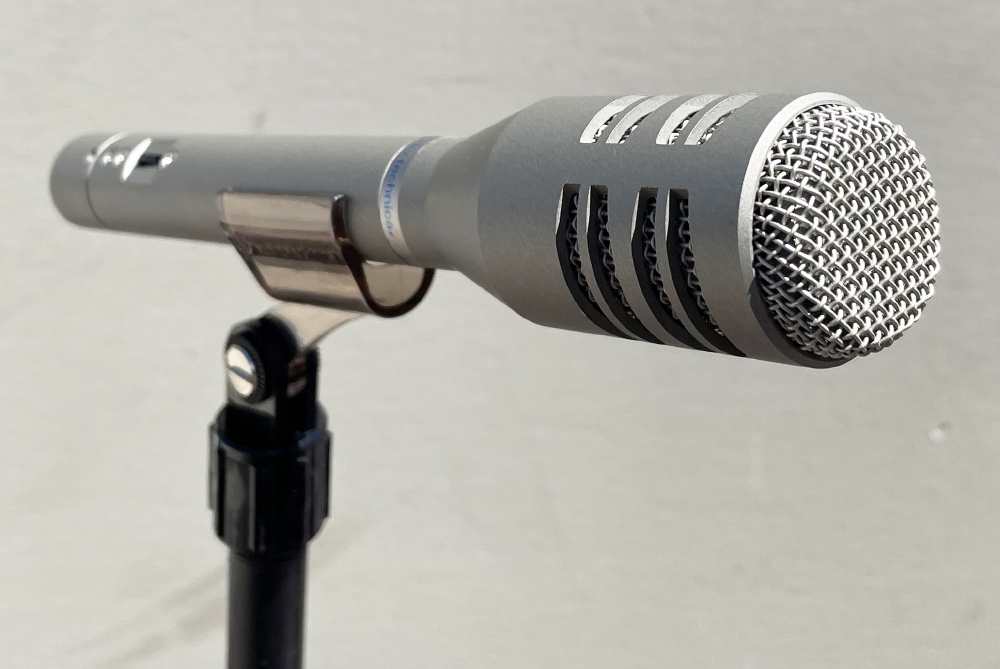I first became aware of Audio-Technica in the 1980s when I was hired to play percussion for a buddy’s album. It was only my second time in a real commercial studio, and they provided me with a nice set of the brand’s headphones. But I didn’t know the company made microphones until years later when I was researching mics to buy for my own sound company.
Audio-Technica (often stylized as audio-technica) – currently celebrating its 60th anniversary – was founded by Hideo Matsushita in 1962 in a small apartment in the Shinjuku ward of Tokyo, Japan, initially developing phonograph cartridges. The first two products – the AT-1 and AT-3 – achieved success and enabled Matsushita to expand his business. He opened a larger headquarters in Machida, where the company still operates today.
Alongside cartridges, Audio-Technica began producing headphones in 1974 and microphones in 1978. Kazuo Matsushita, son of Hideo, became president in 1993, and the business continued to expand, opening offices throughout the world and developing products such as the modern VM series of cartridges, ATH-M50x headphones and AT2020 microphone.
The U.S. operation was established in Fairlawn, OH in 1972. (It’s now in Stow, OH.) In an interesting sidenote, in the 80s the company expanded to also produce machinery to make sushi, but today its well known for live and studio microphones, wireless systems, headphones and turntables.
Vintage Views
The earliest Audio-Technica microphone in my collection is an AT811 from the late 70s. I found it online complete with box and paperwork.
While some collectors may think that an item made in the 70s isn’t “vintage,” I disagree. I went to high school in the late 70s, I’m certainly vintage and this mic, at more than 45 years of age, is as well. (My collection spans from early mics produced before World War II to models from my youth in the 60s and 70s as well as a few modern units.)
The 811 is a handheld cardioid pattern electret condenser. The spec sheet included with the mic states, “The 811 was designed for use in professional recording applications and is equally suited for serious amateur recording, high-quality sound reinforcement and other demanding sound pickup situations.”
It employs a thin (6 microns thick or about 0.00025 of an inch) polymer diaphragm that is designed to quickly react to soft and/or high-pitch frequencies. The instruction sheet states, “Internal shock mounting is designed to minimize handling and cord noise.”
The all-metal body sports a matte satin nickel finish and there are metal wire grilles over the front and behind the side ports to protect the diaphragm. The rear of the unit includes an XLR connector and there’s an on/off switch located close to the connector end. Overall, it’s a sleek, good-looking unit.

Like many electret condenser designs of the past, the 811 was set up to operate on a battery because many consoles of the day didn’t offer phantom power. To install a battery, the user simply unscrews the head from the body and inserts the battery, then screws the head assembly back onto the body.
It takes a standard AA battery and the instructions state, “Alkaline or Mercury batteries are preferred for longer life. Only leakproof batteries should be used.”
Options & Extras
Because the head screws onto the body, Audio-Technica mentions that different heads from the company can be attached to the body, including the 812 (a cardioid moving-coil dynamic) and the 813 (a cardioid electret with lower bass response).
The mic shipped with a 16.5-foot cable that was unterminated so users could wire up their own connectors, with the included instructions showing them how to do it. The mic could also be purchased with a cable wired with an XLR for low impedance or a cable with 1/4-inch phone plug wired for high impedance.

The 811 came in a nice, reusable vinyl foam-lined case that provided cutout spaces for the mic, mic clip, cable and even a battery. Also included was a fabric storage pouch for the mic.
While not as old as many of the mics in my collection, the AT811 is a great example of how far microphone technology had developed by the late 70s. With great looks and high audio quality, I wouldn’t hesitate to use it on a stage today.
Audio-Technica 811 Specs
Transducer Type: Electret Condenser, polymer diaphragm
Polar Pattern: Cardioid
Frequency Response: 50 Hz – 20 kHz
Sensitivity: -54 dB
Nominal Impedance: 600 ohms
Max input SPL: 130 dB
Battery Life: 3500 hours (average with intermittent use)
Size: 8 5/32 x 1 3/8 inches
Net Weight: 6 ounces




















